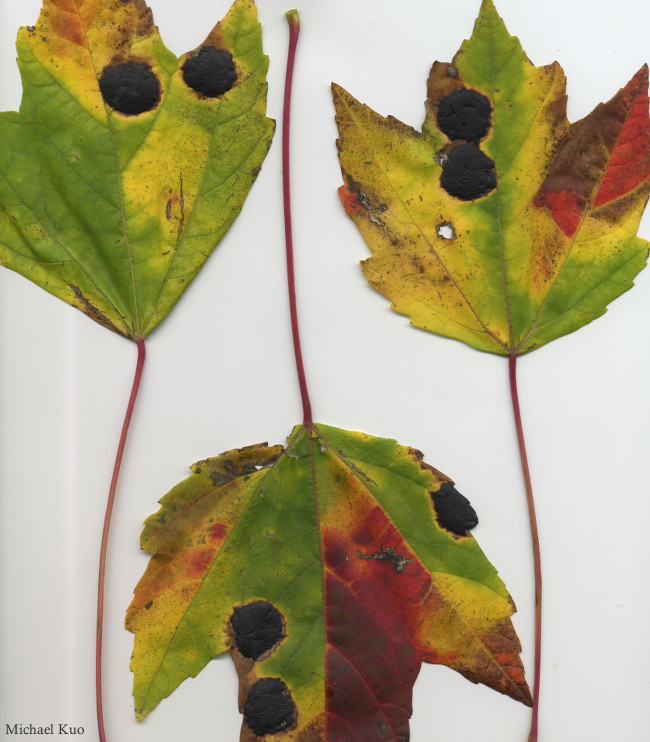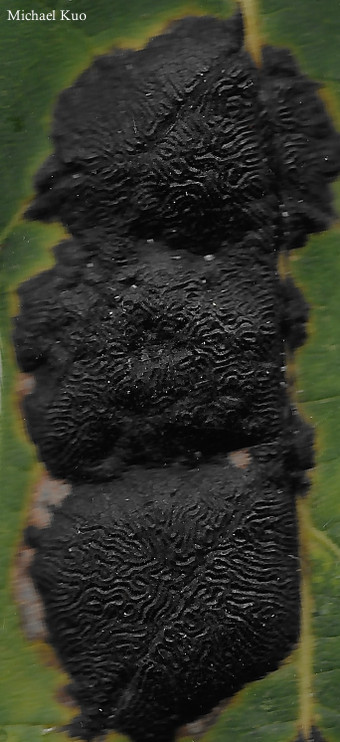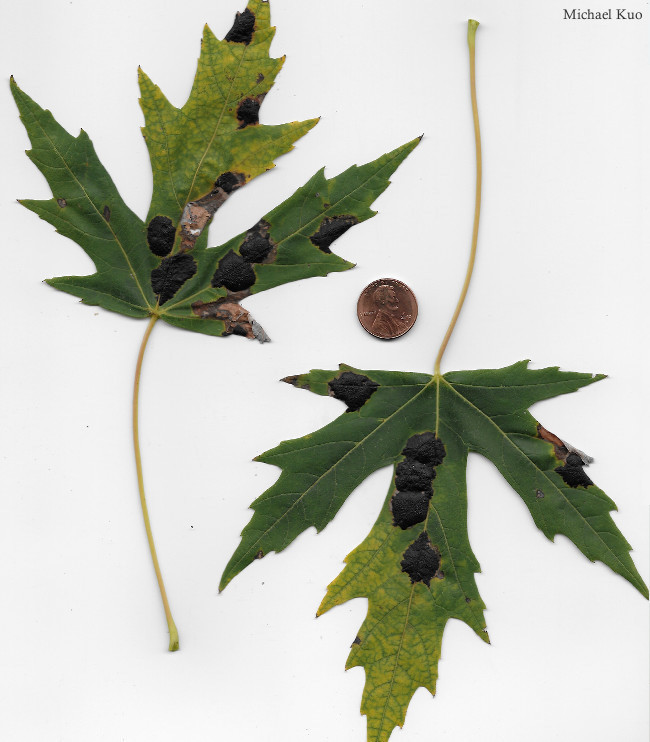 Rhytisma americanum (tar spot of maple) |
 surface of stroma |
|
In late summer and fall Rhytisma americanum makes an appearance on the leaves of silver maples and red maples across the Midwest. It is a fungus, sometimes called "tar spot of maple," and it is a parasite on leaf tissue (especially the outer tissue layer on the upper side of the leaves). Don't freak out, however; Rhytisma americanum will not harm your red or silver maple tree—and even if it were harmful to the tree, there wouldn't be anything you could do to stop it. The fungus actually appears in June or July, when airborne spores land on leaves of the right host. In the case of Rhytisma americanum the host leaves belong to silver and red maples, but related tar spot fungi are hosted by other maples: Rhytisma acerinum infects leaves of Norway maple (Acer platanoides), Rhytisma punctatum infects big-leaf maple (Acer macrophyllum) and mountain maple (Acer spicatum). A related species, Rhytisma salicinum, infects leaves of willows. In the first stages of infection, the fungus grows slowly and appears as a slightly yellowish or grayish spot that is easily overlooked. In late summer and fall, the fungus develops into the stage for which it is named, becoming black and looking like a spot of tar, often with a thin yellow halo. This stage, officially called a "stroma" (plural: "stromata"), is very noticeable, especially since it occurs when leaves are turning to fall colors and receiving more attention. In Rhytisma americanum the tar spots range from about half a centimeter across to 2 centimeters, and are more or less circular in outline, or irregularly shaped. Close inspection of the stroma reveals an interesting surface, channeled with grooves and ridges that are more or less parallel and radiate (again, more or less) from the center. The surface looks like the top of a charcoal briquette that has been strip-mined by some half-crazed ants with no decent plan. |
|
|
|
|
|
|
|
|
References: Hudler et al. 1998, Hsiang & Tian 2007, Beug et al. 2014. Kuo, Michael & Melissa Kuo (September, 2017). Rhytisma americanum (tar spot of maple). Retrieved from the midwestnaturalist.com website: www.midwestnaturalist.com/rhytisma_americanum.html All text and images © , midwestnaturalist.com. |




